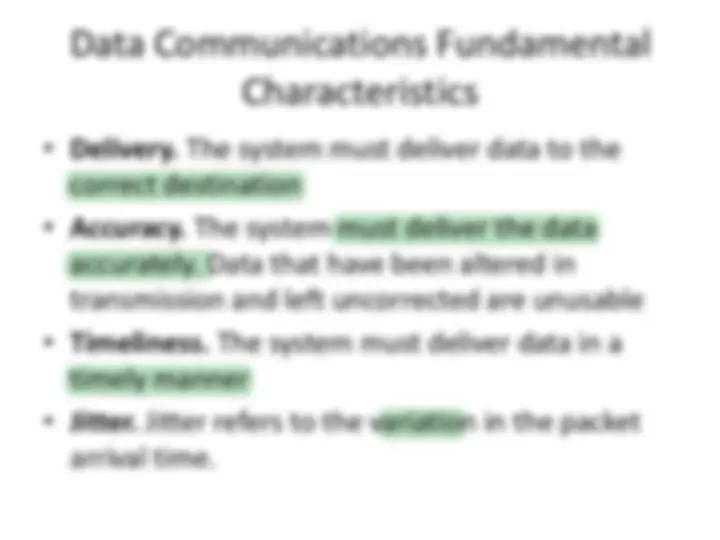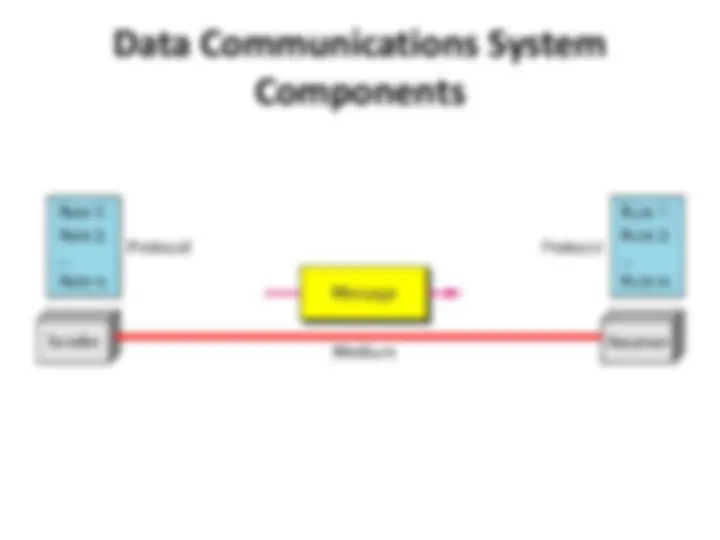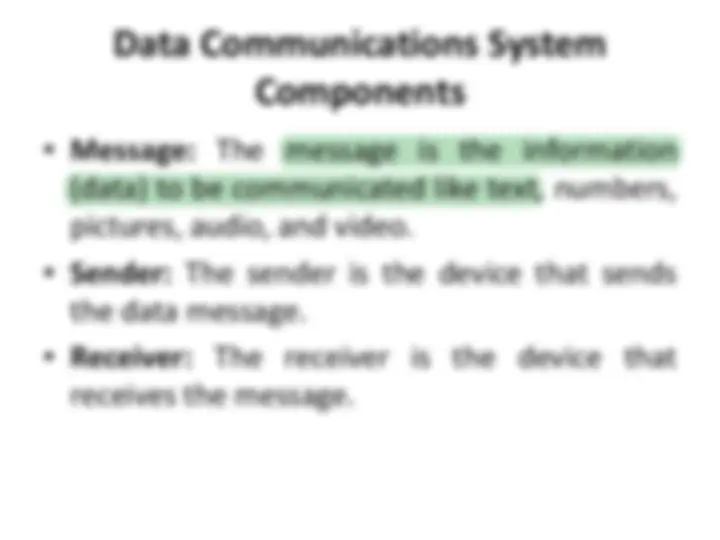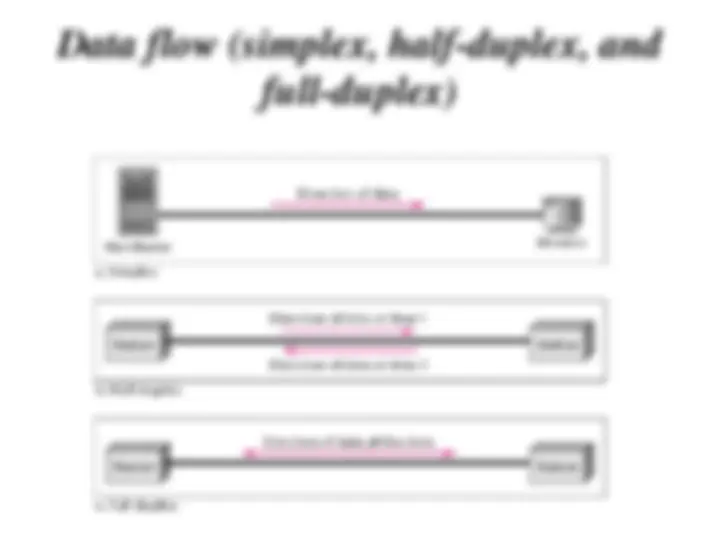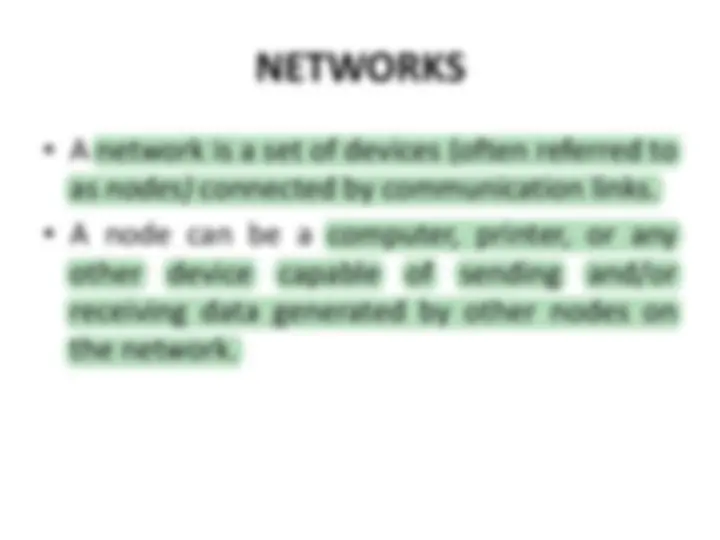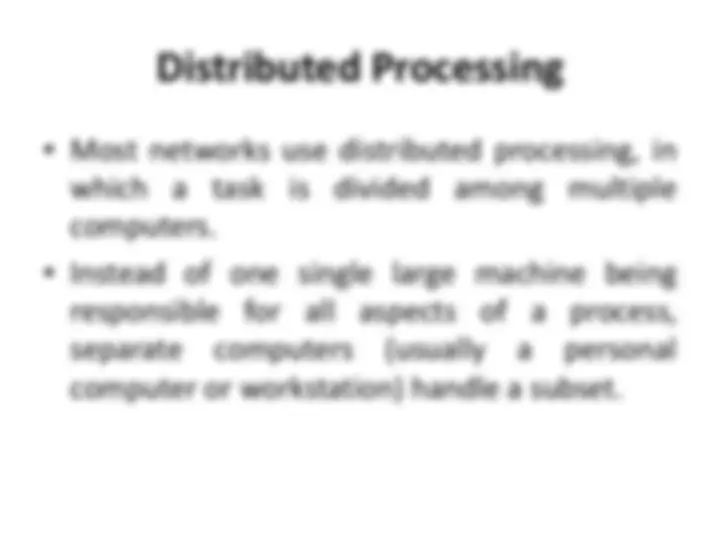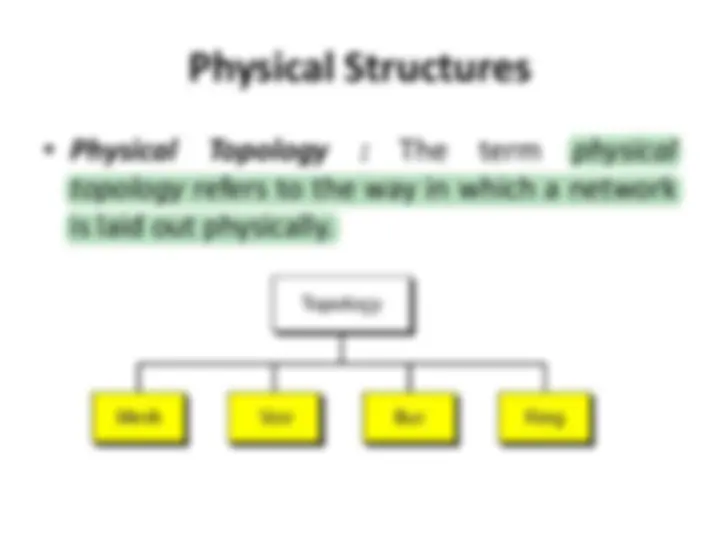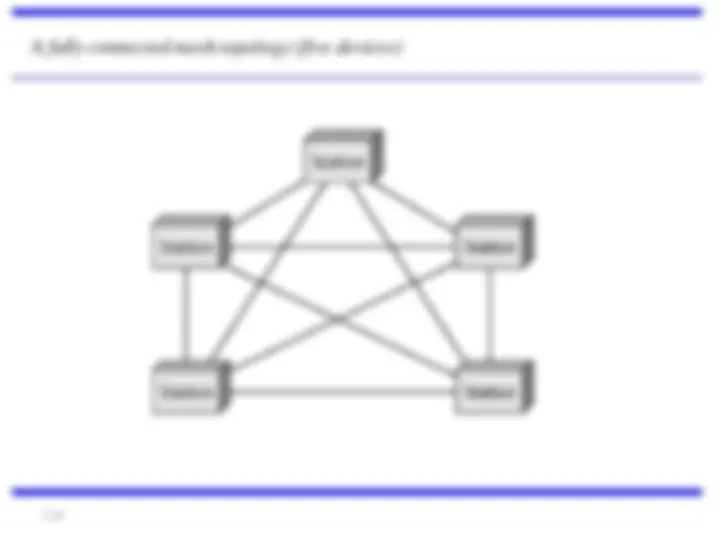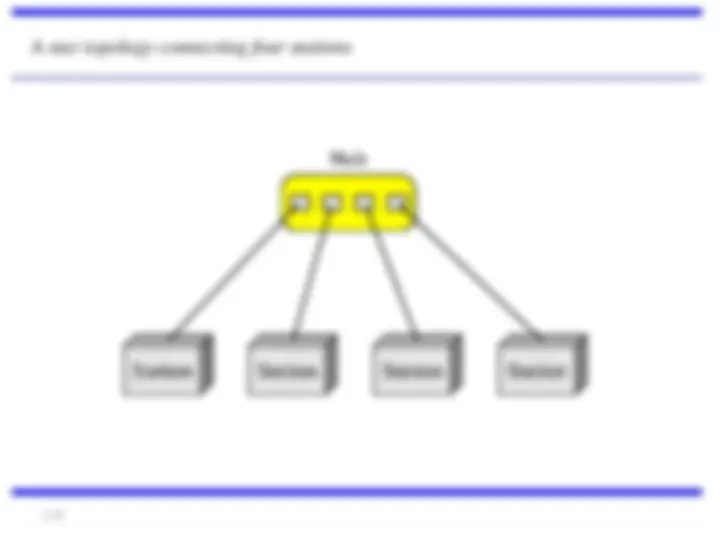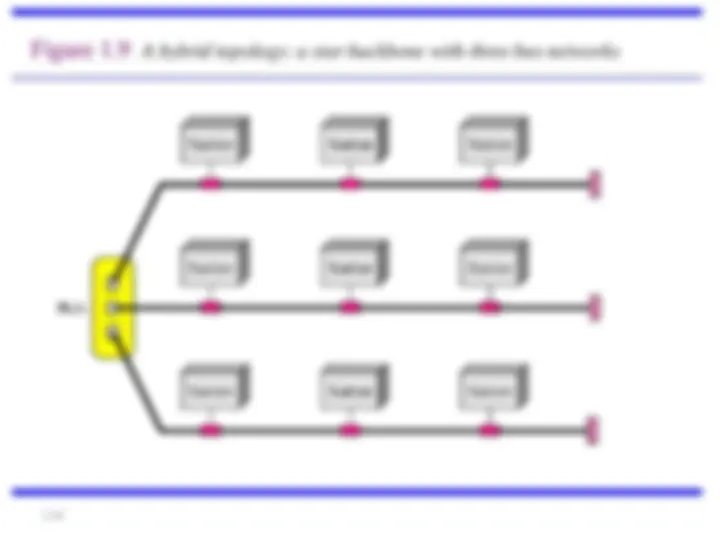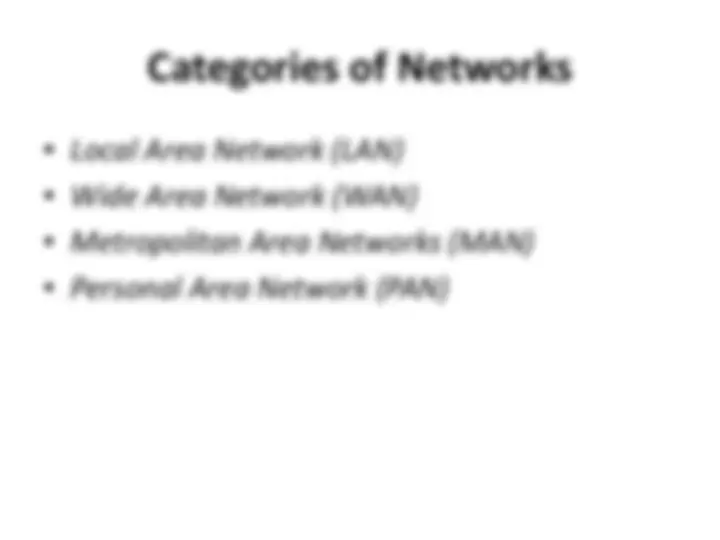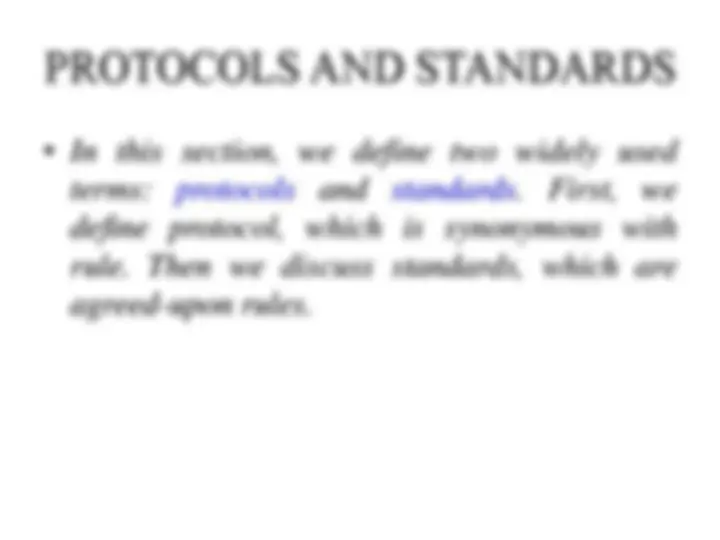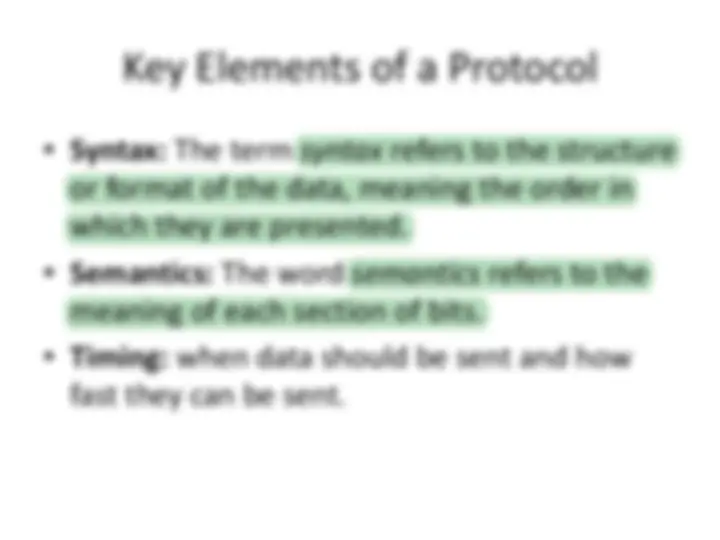Download Data Communication and Networking: Fundamentals and Concepts and more Slides Data Communication Systems and Computer Networks in PDF only on Docsity!
Data Communication and
Networking
Arjun K P, AP, SCSE, GU
DATA COMMUNICATIONS
- The term telecommunication means communication at a distance.
- The word data refers to information presented in whatever form is agreed upon by the parties creating and using the data.
- Data communications are the exchange of data between two devices via some form of transmission medium such as a wire cable.
Data Communications System
Components
Data Communications System
Components
- Message: The message is the information (data) to be communicated like text, numbers, pictures, audio, and video.
- Sender: The sender is the device that sends the data message.
- Receiver: The receiver is the device that receives the message.
Data Representation
- Text
- Numbers
- Images
- Audio
- Video
Data flow (simplex, half-duplex, and
full-duplex)
Distributed Processing
- Most networks use distributed processing, in which a task is divided among multiple computers.
- Instead of one single large machine being responsible for all aspects of a process, separate computers (usually a personal computer or workstation) handle a subset.
Network Criteria
- Performance - transit time and response time.
- Reliability - network reliability is measured by the frequency of failure, the time it takes a link to recover from a failure.
- Security - protecting data from unauthorized access, protecting data from damage and development
Physical Structures
- Physical Topology : The term physical topology refers to the way in which a network is laid out physically.
A fully connected mesh topology (five devices)
A bus topology connecting three stations
A ring topology connecting six stations
Categories of Networks
- Local Area Network (LAN)
- Wide Area Network (WAN)
- Metropolitan Area Networks (MAN)
- Personal Area Network (PAN)
THE INTERNET
Internet is Network of Networks

